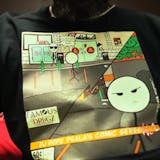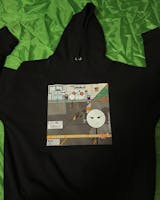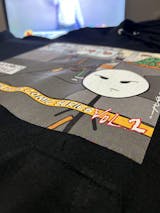DTF printing is one of the new generation techniques gaining traction in the modern digital printing world. This is because it is applied on multiple products. This printing technique is not only applied on textiles, but also on mugs, cups and metal products. Therefore, DTF printing has an unlimited advantage on creativity. On the other hand, one wonders whether DTF transfer can be applied on wooden products. In this article, we will give you detailed information about the application of this printing method on wood.
Is DTF Transfer Suitable for Wood?
As it is known, DTF printing can be applied on products made of glass, textile, metal and many other raw materials. It is a versatile printing method because it is also suitable for wooden surfaces. Even if there are detailed and colorful designs, it can be applied on wooden products.
When applying DTF transfer on wood, it is necessary to use DTF inks suitable for the wood surface. This printing method does not damage the structure of the wood as it preserves its natural and authentic texture. Wood prints can also inspire craftspeople as customized designs are created. Decorative woods and canvases can create artistic products thanks to this printing. DTF printing is therefore one of the perfect ideas for wooden surfaces.
How to Apply DTF Transfer on Wood Surfaces?
We have mentioned that it is possible to apply DTF printing on wood. Now it is worth mentioning how to apply this printing technique on wooden surfaces. If you are operating in the printing industry or want to print on your own, you should follow the steps. DTF printing on wooden surfaces is applied with the following steps:
- First, prepare a printing press, a wooden surface and a Teflon pan.
- Preheat the press and bring it to a certain temperature.
- Run the DTF transfer over the wood before placing to ensure moisture control. Moisture control is important for better adhesion.
- Place the DTF print on the surface where the print will be applied and take care to align it optimally.
- After positioning the design prepared for printing, apply the print to the wooden surface. However, it is important not to leave it on for too long as it can damage the wood. The recommended time is twenty seconds. It will be sufficient to leave the DTF on the wooden surface for twenty seconds.
- Wait for the applied print to cool completely and make sure that the print is completely adhered to the wood.
- After it has cooled completely, you can remove the film. However, this step should be done carefully and gently. Otherwise the pattern may be damaged as it peels off.
- If you see that the film tears while removing the pattern, you can save your print by reapplying heat. For this, it will be enough to apply and remove heat several times.
- To smooth out the wrinkles, you can smooth out the wrinkles with your fingers.
- For the final bonding process, press a Teflon sheet or parchment paper for 15 to 20 seconds to ensure the best adhesion.
On Which Wooden Products Can DTF Printing Be Applied?
DTF printing creates new products that are different from each other as they are applied to wooden surfaces. It is applied on sports equipment, handmade products, photo frames and many more products. For example, the wooden products on which DTF printing is applied are as follows:
- Headboards,
- Cabinets
- Art paintings,
- Accessories for wedding, engagement and entertainment organizations,
- Tables
- Wooden ceiling tiles
- Handmade products,
- Hard wooden jewelry boxes,
- Interactive wooden puzzles for education,
- Tennis rackets
- Baseball bats.








